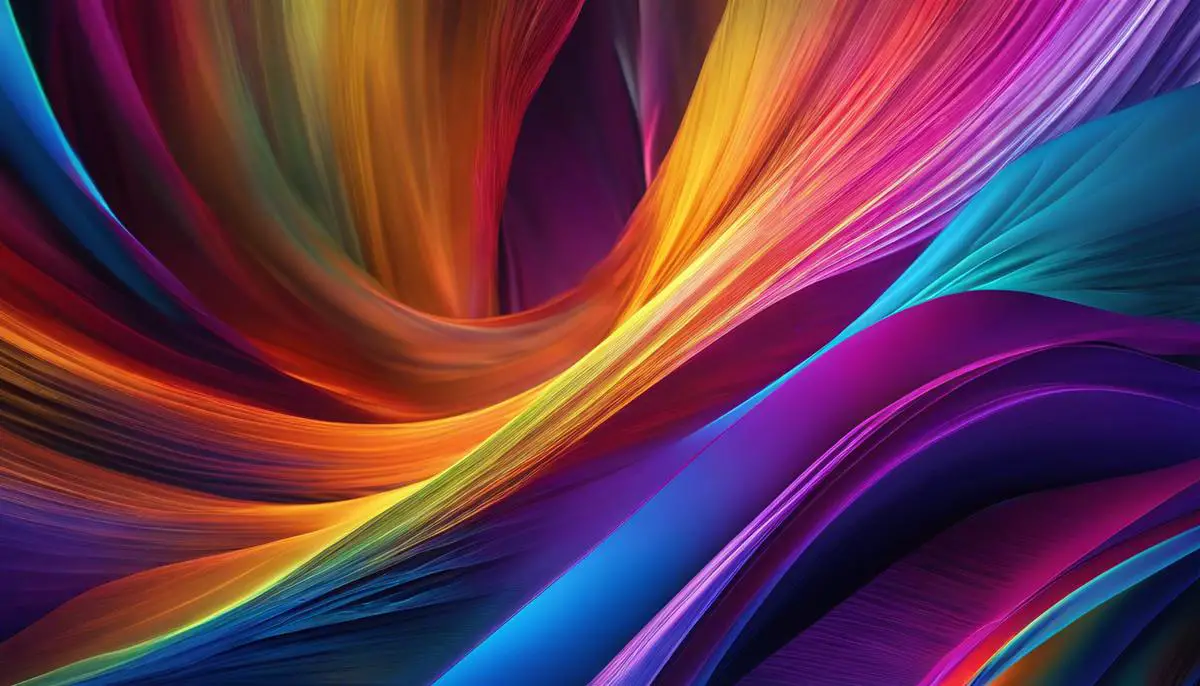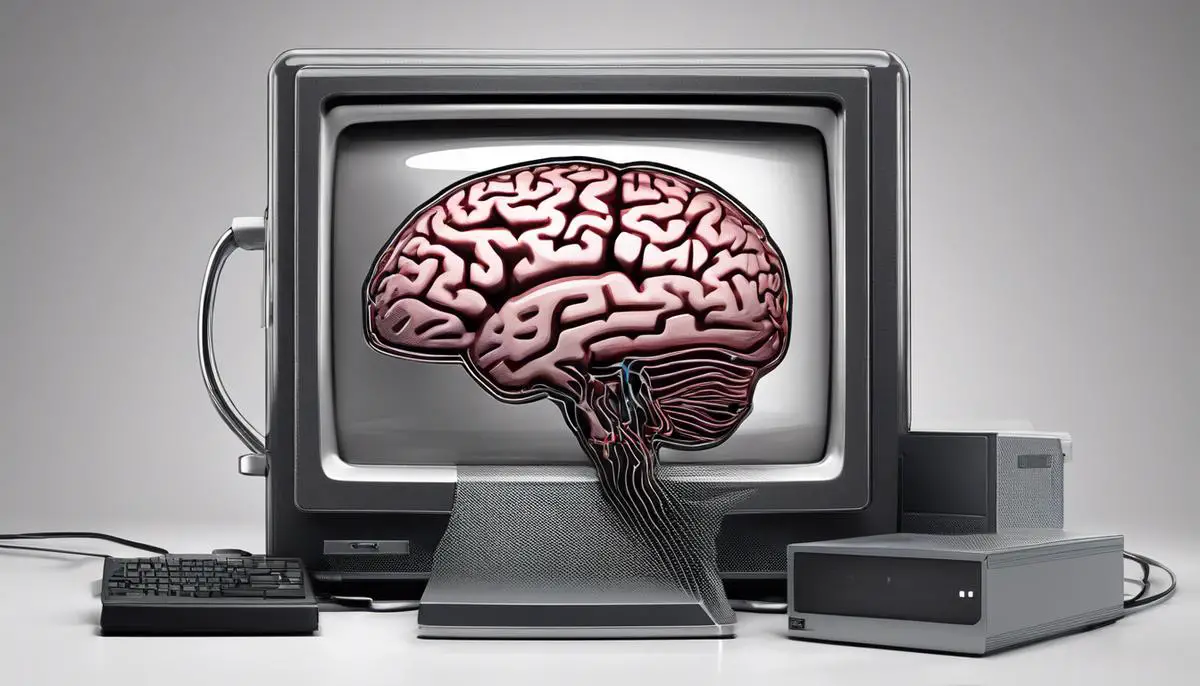In the constantly evolving landscape of artificial intelligence and machine learning, one of the most intriguing developments is the advent of Stable Diffusion, a technology that is reshaping the boundaries between creativity and computation. At its core, Stable Diffusion embodies a transformative process that harnesses textual prompts to conjure vivid, detailed images from the ether of neural networks. This essay embarks on a journey to demystify the mechanics of Stable Diffusion, delving into the intricacies of its algorithmic makeup and the potent role of human-crafted prompts. As we unravel the methods for creating effective prompts, we pave the way for professionals and enthusiasts alike to not just harness, but also master the art of steering this revolutionary image-generation odyssey.
Contents
Understanding Stable Diffusion
Stable Diffusion: The Game-Changer in AI-Generated Imagery
In the ever-evolving realm of technology, nothing stays still, and the realm of AI-generated imagery is no exception. Enter Stable Diffusion—a cutting-edge, open-source model that’s revolutionizing the way we create and interact with digital art.
The Core of Stable Diffusion: How it Works
Stable Diffusion is an AI model specializing in text-to-image creation. It’s powered by a new type of deep learning algorithm called Latent Diffusion. This algorithm operates by gradually refining noise into intricate images, guided by text descriptions provided by users.
If you think of a traditional artist painting on a canvas, first sketching an outline before filling in colors and details, you’re on the right track. Stable Diffusion essentially conducts a similar process within a multi-dimensional latent space—a fancy term for an abstract realm where the AI’s initial “sketches” are crafted and then iteratively improved until a full-fledged image is produced.
This text-to-image model is revolutionary because it’s trained on an immense dataset comprised of diverse images and text, enabling it to understand and generate a vast array of styles, concepts, and subjects. It synthesizes this knowledge to create images with astonishing accuracy and a high degree of creative flair, based on the input text.
The Practical Magic: Stable Diffusion In Action
To harness Stable Diffusion for generating your own imagery, follow these straightforward steps:
- Start with a Clear Text Prompt: Define what you want to create in a simple text description. Think of this step as giving instructions to an artist. Your prompt could be as vivid as “a cybernetic owl perched on a neon-lit tree in a futuristic cityscape” or as abstract as “the concept of hope.”
- Input into Stable Diffusion: Once you have your text prompt, input it into the Stable Diffusion model. You can access models hosted on various platforms that have integrated the technology.
- Processing the Input: The algorithm then gets to work, interpreting your text and transforming a random distribution of pixels in latent space into a coherent image. It goes through iterative refinement, improving the detail and relevance of the image with each step.
- Review and Refine: After the initial image is generated, users have the option to refine the output. Want more vibrancy in the colors, sharper details, or an adjustment in composition? A few tweaks and additional iterations can get you there.
Why It Matters
Stable Diffusion is a powerful tool for creatives, developers, and enthusiasts alike. Graphic artists can iterate on designs more quickly, developers can integrate the model into apps and services for customized imagery, and tech enthusiasts can explore the boundaries of generative art.
Accessibility is a major plus. Unlike proprietary technologies, Stable Diffusion’s open-source nature makes it widely available, inviting a collaborative effort to push its capabilities further still.
In a world where automation and AI are finding footholds in every corner, Stable Diffusion is not just a novelty—it’s a testament to the potential for AI to augment human creativity. From personalized artwork to dynamic visual content for web platforms, the possibilities are expansive—and they’re developing at a remarkable pace.
Stable Diffusion is more than a technical achievement; it’s another step toward a future where the fusion of technology and human ingenuity continues to unlock unprecedented creative horizons. When it comes to creating the impossible, we’re just getting started.

Crafting Effective Prompts
Maximizing Results with Stable Diffusion: Crafting Precision Prompts for Impressive Imagery
Captivating visuals crafted by artificial intelligence are no longer science fiction but a scintillating reality, thanks to Stable Diffusion. This marvel of technological innovation transforms arbitrary text into powerful imagery, but to harness its true creative potential, one must master the art of prompt engineering. Efficiency and precision drive the desired outcomes when dealing with the latent space of possibilities that Stable Diffusion navigates. Here are laser-focused instructions on how to compose prompts that command Stable Diffusion to generate the exact visual narratives envisioned:
- Specify the Subject with Clarity: Begin your prompt with a clear and concise description of the subject matter. Whether it’s a serene landscape, a futuristic cityscape, or a detailed portrait, make the main subject unambiguous. For example, “a panoramic view of a Martian colony at sunset” is more effective than just “space stuff.”
- Delve into Detail: Once the subject is crystal clear, enrich it with specific details that paint a more comprehensive picture. This could be the texture, color scheme, or particular elements that should appear in the image. For instance, “cyberpunk cityscape with neon signs, rain-soaked streets, and hovering vehicles” gives Stable Diffusion vivid details to work with.
- Consider Composition: Visual composition matters even to AI. Provide guidance on the perspective, focal point, and balance. Do you want an aerial view or a close-up? Should the eye be drawn to a person in the foreground or the sprawling hills in the background? A prompt such as “bird’s eye view of a densely packed medieval bazaar” leverages compositional cues.
- Be Mindful of Mood: Mood sets the emotional tone of an image. Use emotive and atmospheric descriptors to shape the image’s feel. Words like “eerie,” “tranquil,” “chaotic,” or “joyous” prime Stable Diffusion to imbue your creation with the desired ambiance. For example, “an eerie Gothic castle shrouded in midnight fog” employs mood effectively.
- Apply Artistic Influence: To guide the output closer to a particular aesthetic, draw upon styles or names of artists. If Picasso’s abstract shapes inspire you, include that. If you prefer a digital art style, mention it. Ensure you include phrases like “in the style of [Artist Name]” or “reminiscent of [Art Movement].”
- Remember the Rule of Specificity: Specifying does not mean overloading the prompt with detail, leading to muddled outcomes. Instead, provide enough guidance to steer the generation process without stifling creativity. A well-crafted prompt finds the sweet spot between being explicit and leaving room for creative interpretation by the AI.
- Iterate Toward Perfection: Initial results might not always match your expectations. Use them as a guide to refine your prompts, tweaking details and elements until the outcome aligns with your vision.
- Leverage Prompt Chains: Chain prompts by using initial images as a stepping stone. Extract elements you like and modify your prompts accordingly for subsequent generations.
Prompt engineering for Stable Diffusion is both art and science. It’s a delicate dance of words and imagination, where each term is a directive and every descriptor fuels the AI to compose the visuals that previously resided in the abstract realm of thought. Harness these strategies, and the bridge between the conceivable and the creatable grows ever shorter. Engage Stable Diffusion with crafted precision, and watch as the canvas of the digital age comes to life at the command of your textual brushstrokes.

Iterating and Refining Outputs
Fine-Tuning the Artistic Genius of AI: Mastering Stable Diffusion Output Refinement
Harnessing the power of Stable Diffusion to churn out awe-inspiring visuals is just half the journey; iterating and refining those outputs into polished masterpieces is where the real magic lies. Advanced users know that the creation process doesn’t end with the first result—this is where the analytical meets the aesthetic, engaging in the fine-tuning of AI-driven artistry.
Embrace the Iterative Process: The journey from a rough draft to a refined piece of art is a path of iteration. Don’t expect perfection on the first try. Generate multiple images, analyze their strengths and weaknesses, and refine your input prompts accordingly. Each cycle is an opportunity to narrow down on the ideal visual representation.
Deep Dive into Parameters: Beyond the initial prompt, Stable Diffusion offers a range of parameters to tweak—understanding and adjusting these can significantly alter the final image. Consider adjusting sampling steps, guidance scale, or the CFG scale to influence the randomness and adherence to the prompts.
Utilize Specific Keywords for Enhancement: If the initial output is close but lacking in certain aspects, identify the specific attributes you desire to improve. Use targeted keywords related to texture, lighting, or composition to refine your results. It’s the tech-savvy equivalent of adding a final brushstroke to a painting.
Post-Processing: Unleash the full potential of your outputs with post-processing tools. Combine the capabilities of photo editing software with the generated images, employing selective adjustments to contrast, saturation, or sharpness. Post-processing is a critical stage to fine-tune and adjust details that Stable Diffusion may not perfectly capture.
Experimental Branching: Leverage variations and branching to expand your creative horizon. Start from engaging outputs and introduce small, experimental alterations in subsequent prompts. This technique burgeons a tree of variations, opening doors to unexpected and often striking results.
Collaborate with Communities: Engage with online forums and communities. Sharing results and learning from the collective experience can provide insights and uncover new strategies for refining Stable Diffusion outputs. Community-driven parameter presets are often a treasure trove for those looking to achieve certain styles or finishes.
Feedback Loops: Implement a feedback loop system where the AI’s previous outputs inform the next set of prompts. Analyze the image, generate a refined prompt based on what is or isn’t working, and send it back through the model. This cyclical approach converges the outputs closer to your envisioned ideal with each iteration.
The Role of Dataset Tuning: If the depth of refinement required extends beyond prompt and parameter manipulation, consider dataset fine-tuning. Developing a curated mini-dataset can train the model to generate outputs that are more aligned with your unique artistic vision or specialized needs.
Harness the AI as a Creative Partner: Remember, the AI is not just a tool—it’s a collaborator. Treat the Stable Diffusion model as a creative partner, learning to communicate through the nuance of prompts and parameters. The more effectively you direct the AI, the better it can translate your commands into stunning visual narratives.
Refining the outputs of Stable Diffusion is not just about mastering a tech tool—it’s an art form that marries the precision of technology with the boundless potential of human creativity. Keep pushing the boundaries, never settle for the first draft, and watch as AI aids in elevating imagery to levels that were previously unimaginable. The perfect image is out there, waiting at the intersection of perseverance, innovation, and a well-crafted prompt.

Mastering the language of Stable Diffusion is akin to learning the brushstrokes of digital painting, where each word serves as a color on an artist’s palette. With the insights gathered from understanding Stable Diffusion, crafting detailed prompts, and diligently iterating to refine outcomes, we stand at the vanguard of a new era of generative artistry. As we close this exploration, we are not at the end but at the beginning of a path that leads to undiscovered possibilities in AI art generation. This knowledge equips us with the power to transcend traditional limitations and to unleash our deepest creative potential through the synergy of human ingenuity and artificial intelligence.

Emad Morpheus is a tech enthusiast with a unique flair for AI and art. Backed by a Computer Science background, he dove into the captivating world of AI-driven image generation five years ago. Since then, he has been honing his skills and sharing his insights on AI art creation through his blog posts. Outside his tech-art sphere, Emad enjoys photography, hiking, and piano.

